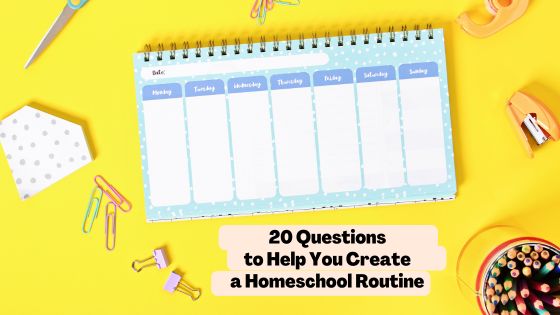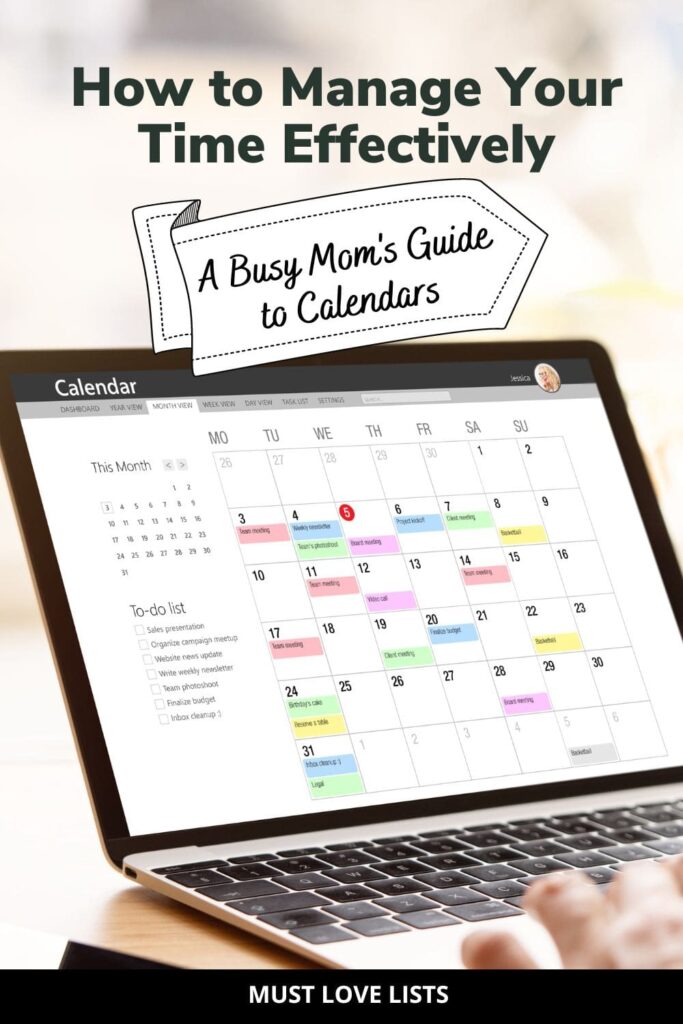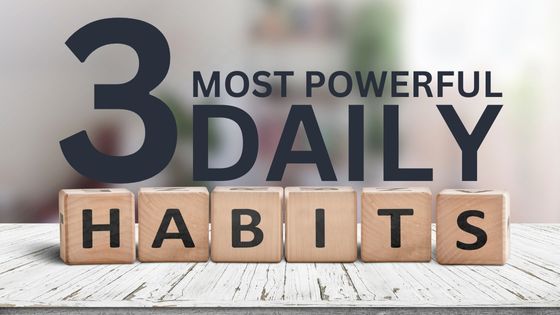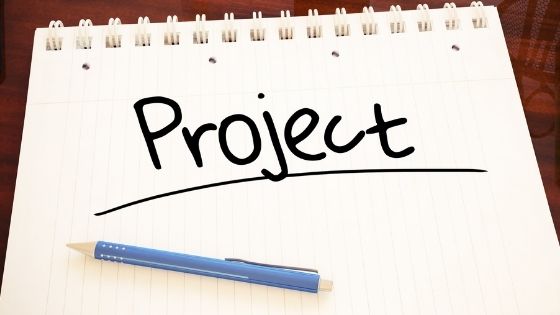Create a Homeschool Routine That Works for You
Still looking for the elusive perfect homeschooling schedule? These questions will help you think through how to create a homeschool routine that works for your family.
Rather than give you a schedule to follow or a daily routine to copy, I’d like to offer 20 questions for you to consider as you implement a homeschool plan that feels sustainable.
Keep reading to find out how you can download a free workbook to help you think through these questions and create your workable homeschool routine!

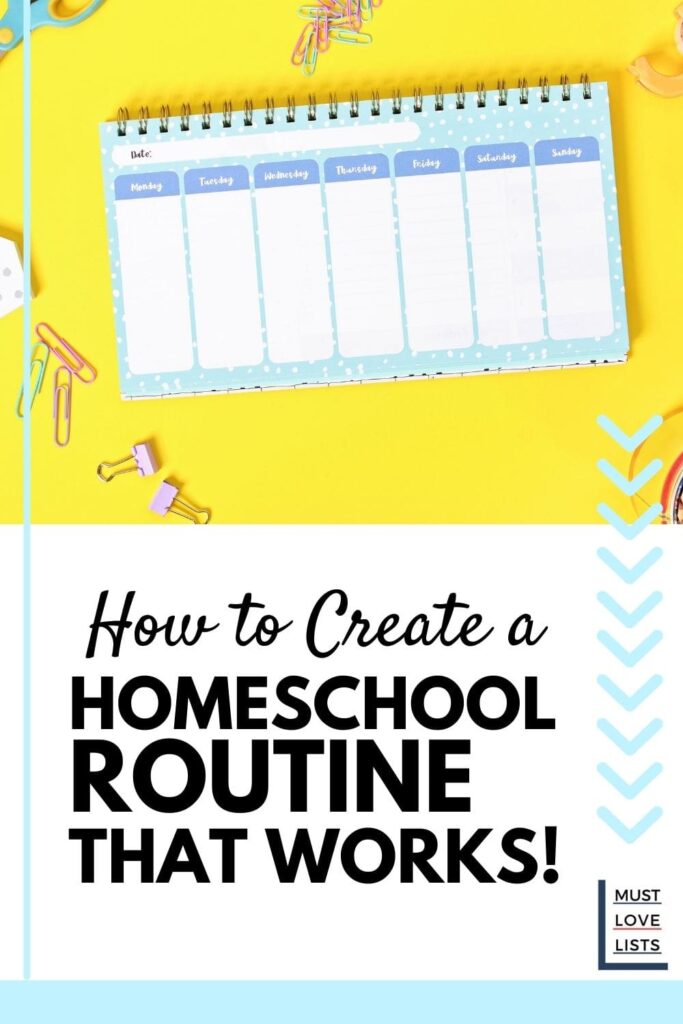
Big Picture Questions
These big picture questions should be answered before you move on to the daily details of creating a homeschool routine.
1 // Do you know your state’s homeschool requirements?
Start here. Find out whether your state requires you to track a specific number of days or hours, teach specific subjects, or submit assessments. This will impact your daily routine to some degree.
You can begin the search for your state’s requirements with HSLDA’s homeschool laws by state.
2 // What is your family’s schedule outside of homeschooling?
Pull up your calendar and get clear on your current commitments. You need to know what time you realistically have available to homeschool. Consider all of the following potential schedule commitments for your family.
- work schedules
- scheduled classes or co-ops
- extracurricular activities
- medical appointments
- volunteer commitments
- extended family activities
- church activities
You’ll find it helpful to map out a typical week. This can be done using a piece of paper with the days of the week written across the top and hours of the day written down the side, similar to a planner page.
Each time you think of an obligation, commitment, or activity that takes up a block of time, write it down in that time block so you can quickly see your available time.

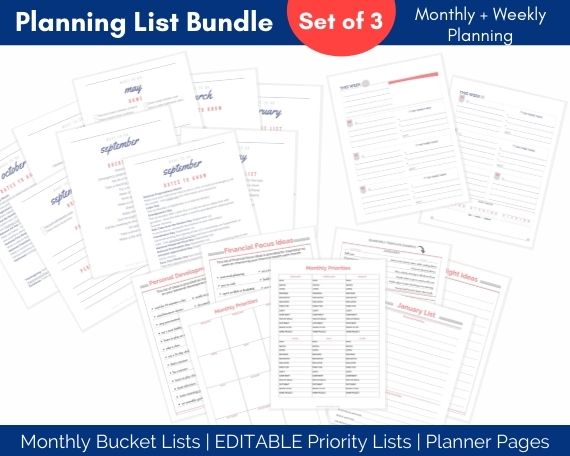

3 // What type of annual schedule appeals to you?
This is still a big picture question, so you’re thinking about your schedule over the course of a year. You can always adjust, but give some thought to how you want to schedule your year overall.
Here are a few schedules to consider:
- year round
- follow the local public school calendar
- six weeks on, one week off
- take breaks as needed throughout the year
4 // What kind of homeschooler are you?
This question will help you narrow down or eliminate options for creating your routine that might not be a good fit for your family.
Consider the following types of homeschoolers and note which category most represents your style.
- Classical: uses the Trivium to teach grammar, logic, and rhetoric successively
- Charlotte Mason: emphasis on living books, narration, discussion, real-life learning
- Unit Studies: integrates a theme or topic into multiple learning subjects
- Unschooling: philosophy of child-led learning
- School at home: mirrors the traditional school experience at home
- Eclectic: mixes and matches from a variety of styles and resources
Here is a detailed look at each homeschooling style, along with video testimonies, on the Home Educator website.
A project-based, interest-led homeschool will naturally be less structured than a school at home or classical homeschool.
5 // How much structure do you enjoy?
Regardless of whether you’re highly structured or more free-spirited, I would not suggest attempting a rigid schedule with specific subjects slotted into 15-30 minute increments.
However, you should ask yourself what an ideal routine would look like to you.
Do you like the idea of each week following pretty much the same schedule?
OR
Would you like to have a change in routine pretty regularly?
Keep this in mind as you start to answer the daily details questions.
Read: 7 Steps to Plan Your Homeschool Year
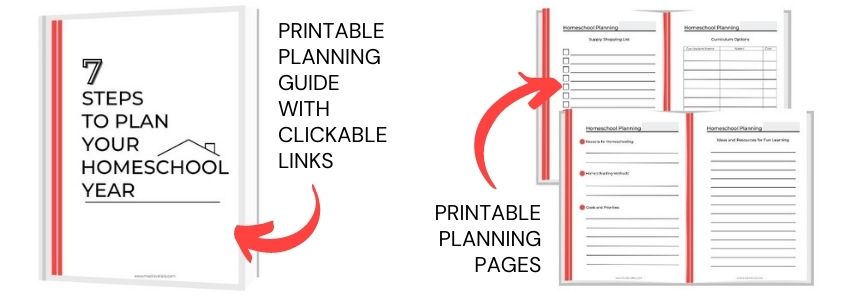

Daily Details Questions
Now that you’ve answered the big picture questions you have an idea of your state homeschool requirements, your family’s overall schedule, and what kind of homeschooling appeals to you. You’re ready to dig into the details of exactly how to create your homeschool routine.
6 // What household routines do you need to incorporate into your week?
Back in big picture question #2, you listed all the external commitments to your time—appointments, classes, commitments. But those are just a portion of the activities taking up your time.
Think about the time you need to spend on household routines outside of homeschooling each week.
- grocery shopping
- meal planning
- meal preparation
- household cleaning
- gardening
- baby nap times
- walking the dog
The more you create household routines that are systemized, the less time and mental energy it will take to get these tasks done every day/week.
Estimate the time you spend on your recurring household tasks and block them out on the same page you listed your external commitments in question #2.
Not all these time blocks are necessarily unavailable for homeschooling. For instance, afternoon nap time for your toddler can be the perfect distraction-free time to work with your elementary student one-on-one.
If you drop kids off to a swim lesson or music lesson, you may be able to use the time they spend there to grocery shop or you could use that time to work with another of your kids individually.
Write it all down and get familiar with your recurring time blocks.
7 // How many days per week do you want to homeschool?
Maybe you’ve never considered a homeschool routine different from the traditional school schedule, but there’s nothing to say you must “do school” five days a week.
Many homeschool families plan regular schoolwork for four days a week and leave a day open for field trips, projects, or catch up. This is my personal preference.
8 // Do you want to implement a block schedule for some subjects?
A block schedule entails working on subjects a few times per week rather than daily. Block schedules can be modified in whatever way you wish. One popular way to approach this is to include math and language arts as a daily activity, and plan to work on science and social studies two days each week.
If you want to offer your kids the opportunity to dive deep into a subject rather than portion out small daily lessons, this can be a great way to set up a homeschool routine.



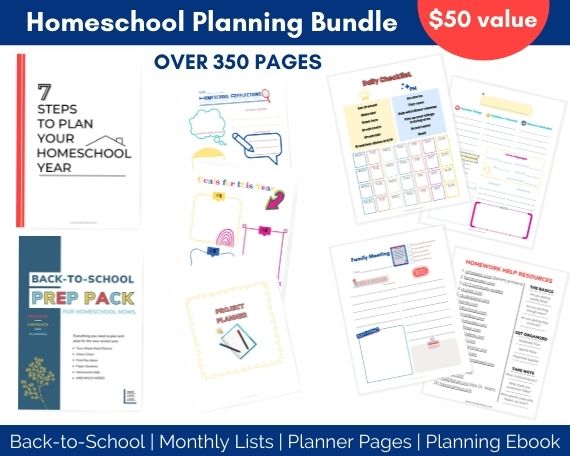

9 // Do you want to do anything on a loop schedule?
Loop scheduling is a way of working through a list (loop) of subjects within a given time period. For example, you may decide to do a daily read-aloud and math practice, but loop history, science, music, and art. Your loop is working on those subjects in the same order.
The benefit to this type of schedule is that you don’t get behind in any one subject when you have interruptions to your schedule. So if you have a household emergency that derails your homeschooling for a morning, you just pick up where you left off in the loop and continue on working through the subjects in order.
Here are a few possibilities for setting up a loop schedule.
- core subjects on daily or block schedule/all other subjects on loop schedule
- all subjects on loop schedule
- “extras” on a loop schedule (additional activities you want to include whenever possible, like a nature journal, poetry reading, geography video, etc.)
- choose a specific time of day to work through your loop schedule
10 // How structured do you want to be with extra activities?
Do you want to plan a specific library day every week? Maybe you want to plan a field trip for each month of the school year? Think about what your priorities are for “extras” and how much structure you want to build in to make those things happen.
Spend a little time brainstorming what types of activities you would like to include in your school year that aren’t a part of your regular curriculum and how often is reasonable to include them.
You may decide to make a list and try to fit things in as time allows, or you may decide to create a recurring routine to prioritize things you want to make time for.
11 // Are there specific activities you want to incorporate daily, weekly, or monthly?
If you like even more structure, choose in advance specific activities (games, field trips, read-aloud books, documentaries) and assign them to a month or week of the year.
Examples of extra activities:
- field trips
- library trips
- art projects
- games
- trying or cooking new cuisines
- poetry (we like to do Tea Time Tuesday once a month with poetry!)
- volunteering
- read-aloud time
- documentaries or movies
- life skills
I like to pick field trips and schedule them ahead for each month, choose monthly seasonal art projects, and a life skill to specifically work on each month of the school year.
Read: Monthly Lists to Plan Your Year
12 // Do you plan to work with multiple kids together on any subjects?
Clearly, some subjects and ages are easier to combine than others. Math might be a little tricky, but many times it’s possible to do at least some work together, opening up opportunities for conversation and learning from each other.
Do you intend to have some kind of morning meeting/morning time/morning basket with all your kids together? If so, what will you do during that time?
- reading
- Bible study
- memorization work (scripture, poetry, speeches)
- music appreciation
- current events (World Watch News, PBS NewsHour Classroom, Science News Explores)
- quotes
- trivia
- word of the day
- geography and culture study
13 // Do you want to work on subjects in a particular order?
As you’re thinking about creating a routine, are there ways of ordering your days that best suit your energy levels, ability to focus, or just makes things easier?
For example, if your kids are most able to focus right after breakfast, maybe that’s a good time to work on math or writing. You might choose to break up subjects that are reading heavy with something more hands on in between.
There’s no rule that you have to work on subjects in a specific order each day, but you and your kids may find it helpful to know what’s next rather than constantly wondering what to do.
As your kids get older and display more autonomy in creating their own routines, discuss these ideas with them. Help them contemplate what an ideal schedule would look like for them based on their self-awareness of how they learn best.
14 // Can you use habit stacking to add wish list activities?
If you’ve never heard the term habit stacking, it simply means you identify a current habit that you’re already doing and add a desired behavior (habit) onto that.
Practically speaking, this could look like choosing to have a discussion about a specific topic every day at lunchtime. You might play a history or science podcast every time you drive kids to a specific activity or plan to work through a unit study on inventions right after breakfast.
The possibilities are endless. You can add a fun learning opportunity to a daily habit like brushing hair and teeth: listen to a 5-minute podcast, pray, practice a list of spelling words from a post-it on the mirror, practice multiplication tables.
Or, you can add an activity to the beginning or end of a daily or weekly habit.
Spend some time thinking about what learning opportunities are on your wish list for this school year. Then, think about your current daily or weekly routine and find a time you can tack one of your wish list activities onto something you’re already doing.
Read: 52 Small Healthy Habits for a Year of Big Change
15 // Do you have productive morning and evening routines?
Let’s be honest, your homeschool day is always going to run more smoothly if you—the busy homeschool mom—are less stressed and more intentional about your daily activities.
There’s no need to create another overwhelming to-do list of stuff to accomplish before you start your homeschool day, but a good morning routine can set you up for feeling productive and capable of handling whatever the day throws at you.
My number one piece of advice is to start small. Pick one small thing to do every morning.
If you frequently forget appointments, make it a habit to check your calendar every morning before breakfast.
For the mom who desperately wants a few minutes to herself, get up just 15 minutes earlier than usual (go to bed earlier if needed!) and spend that time reading, stretching, or taking a hot shower.
If it’s important to you to spend time reading your Bible or praying in the morning, focus on just that thing. Don’t worry about creating the perfect routine with all the things. Create the habit of doing the thing you most want to do.
Once you’ve established a habit of doing that one thing, you’ll find it easier to add one more thing. You’ll know it’s become a habit when you have a crazy morning and you still fight for the time to do that thing. You stop having to remind yourself to do it and it becomes automatic.
I’ve written multiple articles to help you create and establish solid morning and evening routines, which I’ve linked below.
16 // Have you allocated time to prep and plan?
All this routine creation won’t last very long if you don’t provide yourself with dedicated time to find, research, purchase, print, prep, and plan all those homeschool lessons and activities you want to do with your kids.
Be honest with yourself about when you are going to look over completed work, grade assignments for older students, or find supplemental resources for the curriculum your student is struggling with.
Read these articles for planning tips:
Monthly Checklists for Homeschool Moms
Back to School Planning for Homeschool Moms
How to Organize Homeschool: Practical Tips for Back-to-School
17 // Have you gotten input from your kids?
We all know that buy-in from our kids is pretty important for a happy homeschool environment. Before you create your ideal homeschool routine and tell your kids how it’s gonna be, get input from them.
Ask them questions about what they like and don’t like and why. Find out when they prefer to do certain things, how they like to plan their week, or which subjects they prefer to work on together and which ones they like to do independently.
Mindset Questions
The last few questions are designed to help you think about your attitudes and mindset. Consider these questions before you implement any homeschool routine you’ve created.
18 // Are your expectations realistic?
Many homeschool moms, myself included, have grand plans of doing ALL THE THINGS. I love learning, I love teaching, I love planning, and I don’t want my kids to miss out on any opportunities.
However, the reality is that time is finite.
Start slowly in creating a routine and add complexity as you get comfortable with what’s working and what’s not.
19 // Have you left space for the unexpected?
A homeschool routine should feel more relaxed than a strict schedule.
The definition of schedule is “a plan for carrying out a process or procedure, giving lists of intended events and times.”
Contrast that with this definition of routine: “a sequence of actions regularly followed.”
It may be that you enjoy a strict schedule, but if the idea of keeping up with switching every 30 minutes to a new subject or activity stresses you out, your homeschool routine should not replicate a schedule.
A routine is helpful in setting your direction and keeping you on track with what to do next. It reduces the amount of decision-making you need to do on a daily basis by making your activities habitual.
Whatever kind of routine you create, make sure you leave margin for the unexpected.
That might look like setting a cutoff time of 2pm for activities that require your close supervision. Perhaps you like to set aside one day each week for catching up or following rabbit trails.
When you do your lesson planning, you might identify which chapters, projects, or lessons could be combined, skipped, or skimmed if you fall behind where you intended to be.
20 // Are you willing to change your routine as needed?
Finally, it is almost certain that whatever routine you create will need to be adjusted as your family’s needs change.
Hold your routine loosely and regularly reassess whether something needs to shift.
Making Your Homeschool Routine Work
Consistency is key to any routine. When you first create your routine, you may need to make a list of what order you want to do things in or set reminders for yourself. It will take a little effort in the beginning, but as you repeatedly do things on a daily, weekly, or monthly basis, you’ll settle into your routine.


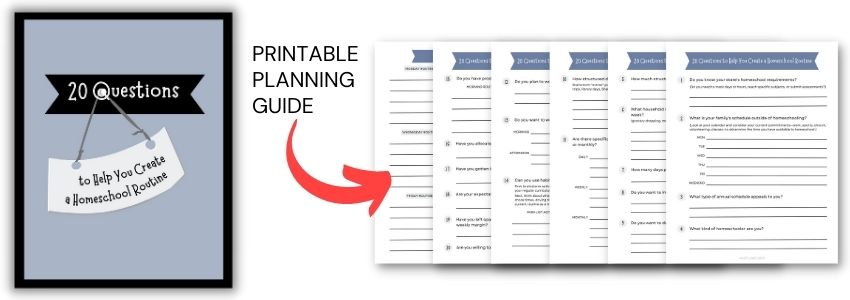

Visit my homeschool resources page for monthly unit study ideas, projects, and homeschool planning help!





Join my mailing list to receive updates when new printable resources are added to the library, plus tips and encouragement for your organized homeschool journey.



